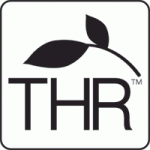Senna
Growing to about 1m in height, senna (Cassia senna L.) thrives in hot, barren regions such as Africa, parts of the Middle East and Southern India. It is cultivated in India and Pakistan. It bears small yellow flowers, which are followed by flat, papery pods containing six to eight seeds.
History of Use
Infusions of senna have been used for thousands of years as a laxative in both the East and the West, usually drunk as a tea or swallowed in powdered form. The first medicinal records date back to senna being used by Arab physicians in the 9th Century. In fact the herb’s common name is Arabian in origin, derived from the Arabic word ‘sena’.
Senna also appears in traditional Chinese medicine as a treatment for atherosclerosis (furring of the arteries), as well as constipation and also to clear ‘heat’ in the liver and brighten the eyes. In addition it was used in Indian Ayurvedic medicine where it was a popular remedy for anaemia, jaundice, bronchitis and skin problems.
During the Middle Ages senna was given the name of ‘Purging Cassia’, as it was used in an Italian medical school as a purgative. These days many over the counter laxatives contain senna as at least one of their active ingredients
 Since April 2014, all herbal medicines for sale in the UK and Europe must be approved by the Medicines & Healthcare Products Regulatory Agency (MHRA) having been rigorously checked for safety and quality. They must also display the Traditional Herbal Registration ‘THR’ logo on their pack.
Since April 2014, all herbal medicines for sale in the UK and Europe must be approved by the Medicines & Healthcare Products Regulatory Agency (MHRA) having been rigorously checked for safety and quality. They must also display the Traditional Herbal Registration ‘THR’ logo on their pack.
Registered herbal medicines containing senna are used today for the short term relief of occasional constipation and bloating based on traditional use only.
